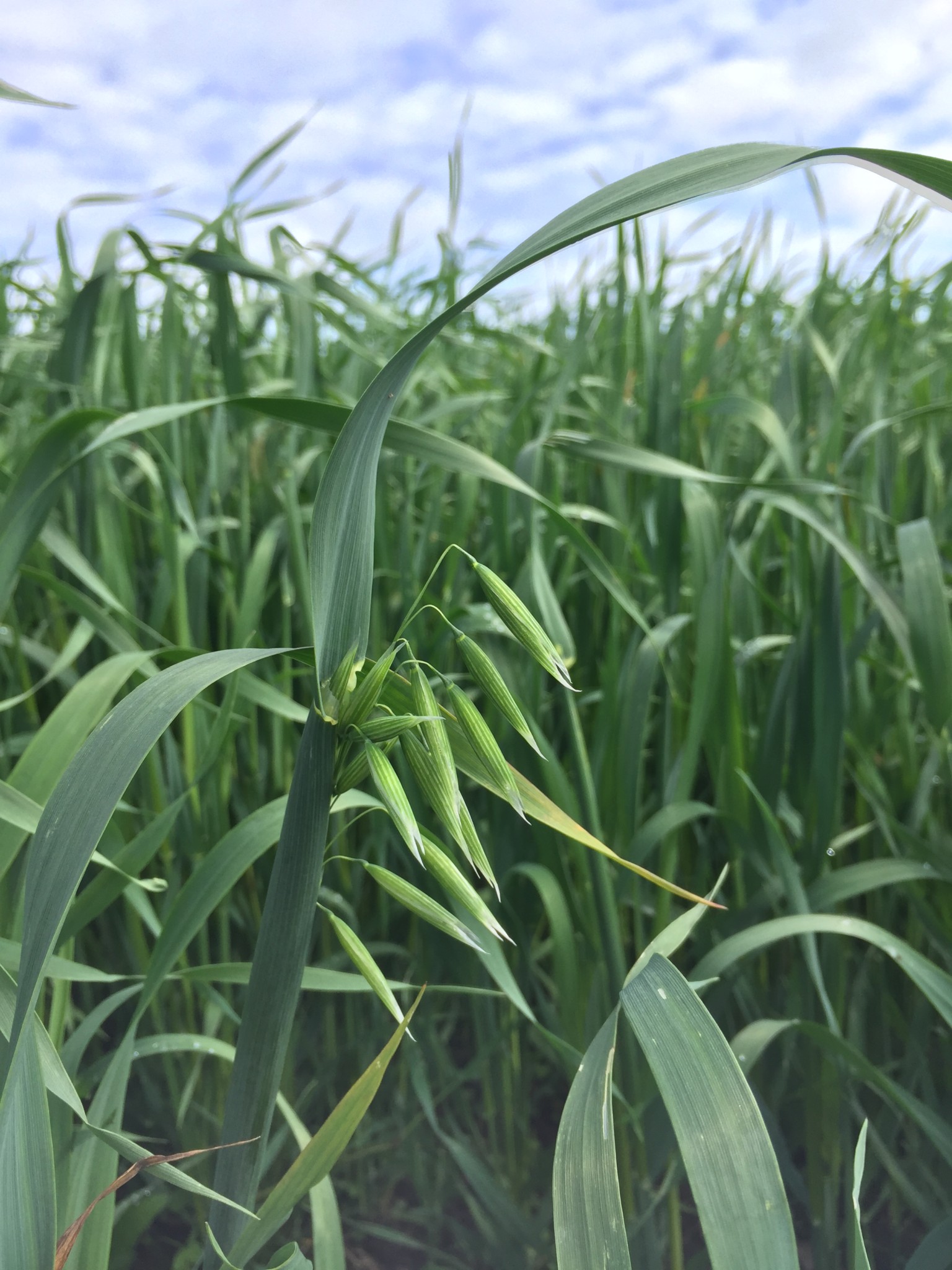This month another member joined the Mountain Hall Farm team; baby Ffion, born on the 1st of July 2019, our second wedding anniversary. We fell in love with her on that very first day — it was impossible stop gazing at her, watching every movement in her cute little face. Already time is passing quickly and she’s growing and becoming more alert by the day. The month before the birth it felt like our lives were on pause, but now the days are flying by. We’ve been very lucky in the baby lottery — she was born happy and healthy, and has been sleeping really well!
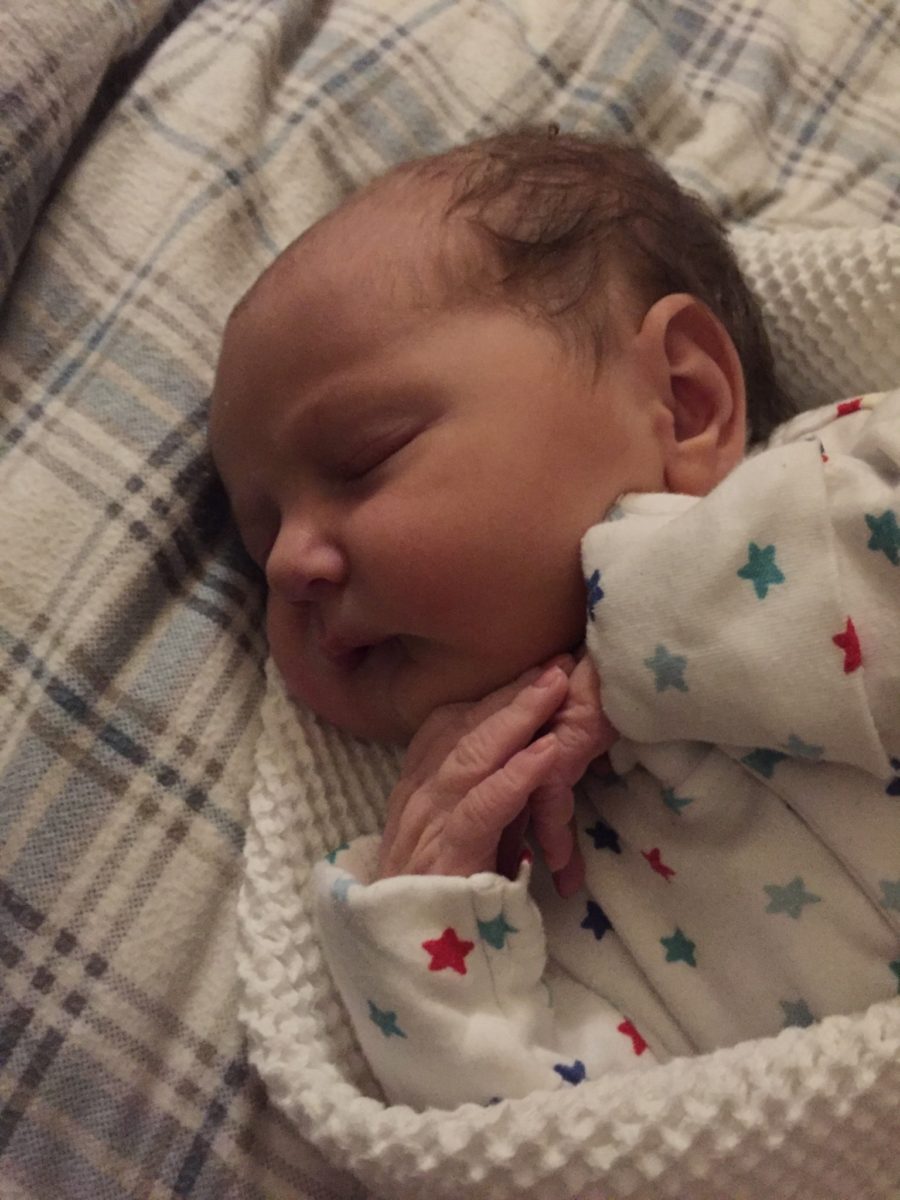
We’re very lucky too to have fantastic friends who have welcomed her so warmly into the world. I feel so grateful to have this community around her that will help her into the world and support her in the years to come. How lucky she is to be surrounded by so many strong, empowered women who can be her role model.
I’ve been lucky to have Ant and Jacqui who have covered my jobs on the farm for the two and a half weeks after her birth — giving me a paternity leave. Also Ant and Emma who supported us throughout the labour process. Laura, an old friend from London, a midwife like Sam, who came down for two weeks to support Sam. And Naomi who was Sam’s doula and supported us in the run up and during labour.
It’s at times like these you remember why it takes a whole village to raise a child. We’re thankful to have that village. In a world of individuals, it might seem odd to people to have so many people around supporting us, but isn’t this what humans always did?
A quick note on the birth because Sam was absolutely incredible. I was in awe of her throughout — her power, endurance and most importantly her unshakeable belief in her ability to birth. A belief forged in Sam’s days as a midwife. It was that belief that meant we let Ffion choose her own birthday, letting her come into the world 20 days past her ‘due date’, going against the advice of induction, which is an intervention that is much over-used and for which the evidence base shows it so often causes complications. Without that strength of conviction Sam wouldn’t have had a normal birth, Ffion would most likely have been brought into the world via a Caesarian. A wonderful intervention for when it’s needed, but it’s overused in the modern world where we have lost faith in nature, and in instead seek to control her. Rachel Reid’s book, Why Induction Matters, is essential reading for anyone going through a pregnancy who wants to choose an evidence-based birth.
I won’t lie, there was a moment 32 hours into the labour, when I thought, ‘this is all going wrong, we’re going to lose her [Ffion].’ At that point I was exhausted and overwhelmed, and the only thing that stopped me crying was a stiff gin (from our good friends at Da Mhile) and a wander out into he fields to see the cows. I had an hour out of the birthing room, our living room, to collect my senses and steady my nerves. Sam however, not once lost her faith or became scared, nor even did she ever feel pain throughout the labour, no doubt the lack of fear contributing greatly. Being honest, I thought she was in a lot of pain, had I known that she wasn’t, I would’ve felt a lot calmer myself!
It was at this point, with the baby in the wrong position (back to back, or ROP to be technical) that we decided it was best to go into hospital. 5 hours later the baby came with a little help from the ventouse. The midwives and hospital staff in general were excellent — again another tribute to the NHS. The baby wasn’t born at home in the end, but the home birth was still a success because it was being in a familiar, calm environment that allowed Sam to labour to almost the point of giving birth, and which facilitated the natural birth that Sam wanted.
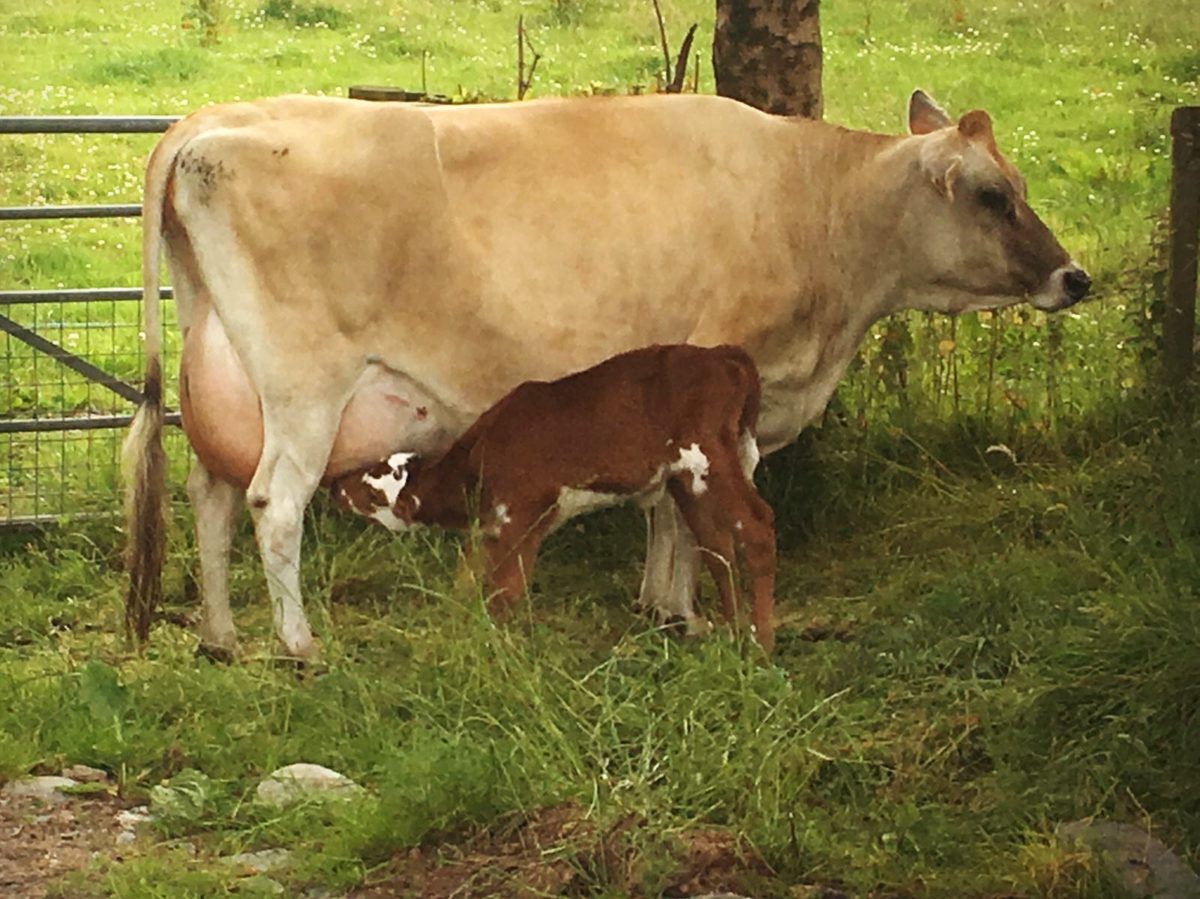
Life on the farm has calmed slightly these last few months as we’ve had our focus elsewhere, but that calm has allowed us to improve aspects of the farm that we previously didn’t have time for. It’s also allowed us to make plans and designs for the future. Our plan is to develop a biodiverse, people-populated, traditional, mixed, organic farm, like they used to be.
100 years ago there would be pigs, sheep, cows, poultry, cereals, vegetables and trees, all integrated into one holistic farming system. The outputs of one would feed the other. Muck from the dairy cows would provide fertility for crops and the by-product of those crops would provide some feed and bedding for livestock. Trees would provide some nutrition and shelter for ruminants whilst providing heat for the hearth and fruit for the table. The farm was a complex, inter-dependent system. In that way it was sustainable.
Of course not every farm followed this pattern but very many did. It was really only post-WW2 that farms became increasingly specialised, due to the demand for cheap food to feed a growing populous in as ‘efficient’ a manner as possible. Combine that with the rise of artificial fertiliser, to some extent the by-product of warfare where it was used for bombs instead of growing food, and coupled with the increasingly difficult economics of farming in the modern world, and specialisation made sense.
Today however, it increasingly makes less sense. Specialisation has led to the degradation of soils and ecologies and the exploitation of farmers and animals. It has led to a vast reliance on small pockets of arable land to do the bulk of the growing for us, weakening local resilience whilst impoverishing the soils of those regions. Land that has been continuously cropped for decades has become reliant upon a heavy dressing of artificial fertiliser, herbicides, fungicides and pesticides, due to the lack of livestock and crop diversity in those regions. Levels of soil organic matter has plummeted, leading to a decrease in soil health and an increase in atmospheric carbon, soil being the world’s third largest store of carbon after all.
Conversely in the wetter west of the UK, farms have become increasingly reliant on imported feed and straw from the drier east. The growth of specialised, industrialised dairy has led to more cows never seeing the light of day except through the slits in the wooden slats of their permanent housing. The need for high energy feed has led to farms around us relying heavily on bagged fertiliser and heavy applications of slurry to provide prolific grass growth, and to push the grass to provide 4 cuts of lush, green silage. The run-off polluting the rivers and streams and in the process killing salmon and trout. The local coraclemen reckon they have just a few years of salmon fishing left. A practice that has existed here for thousands of years will soon end thanks to modern farming practices.
It’s tragic when you step back for a moment and think about it. I sincerely believe that mixed organic, regenerative farming is the rational solution to the problem of specialised, industrialised agriculture.
We’re just one small, insignificant farm trying to re-learn what it once meant to farm, trying our best to follow in the footsteps of people like Newman Turner and George Henderson, who in their day really pushed the fold as to what it meant to run a small, mixed farm. We want a busy thriving farm providing a balanced diet grown in an ecological manner for the benefit of the local community.
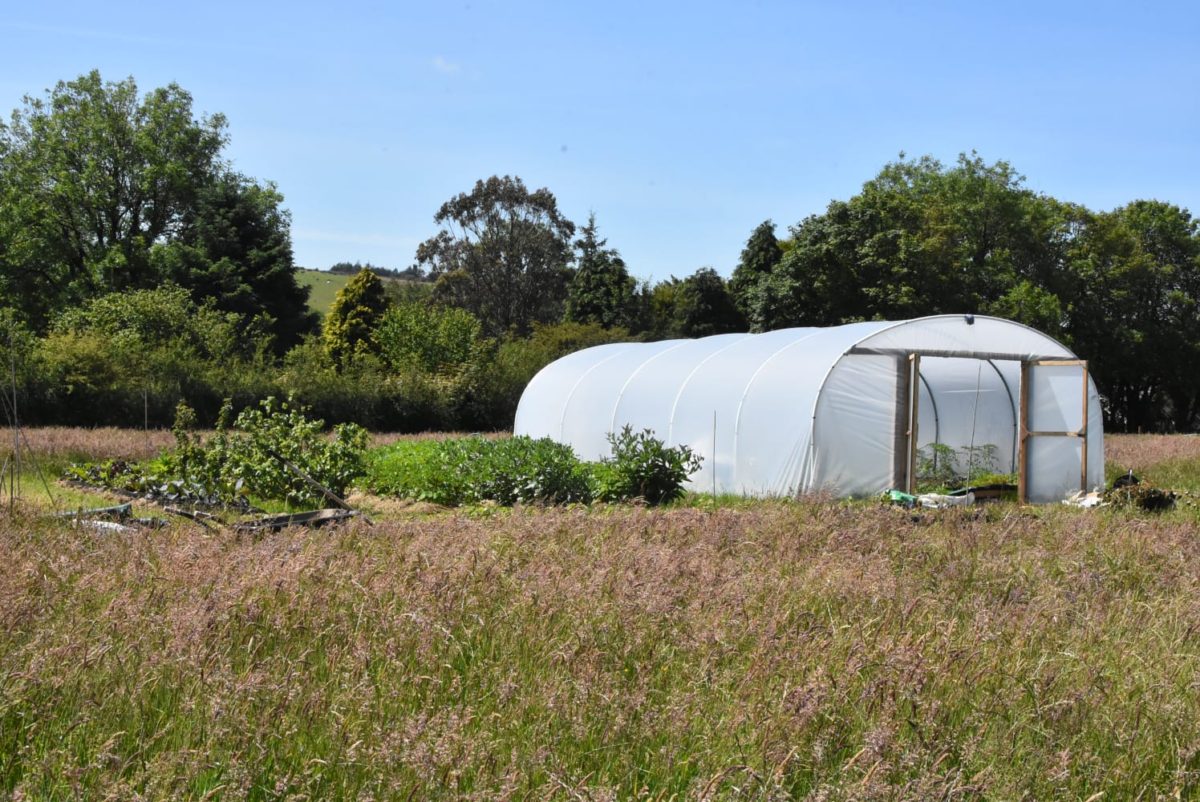
It’s been exciting to watch the development of our friends’ vegetable garden on the farm. They’ve taken on an acre with the aim of growing the bulk of our household fruit and veg, and are in the gradual process of building a mushroom business, growing them in a range of manners; logs, outdoor beds and indoor cultivation. Wales grows very little of its own fruit and veg — something like 5% — and I think an easy way forward is for every farm to turn an acre or two over to veg production.
Wales is in a very precarious position by being so reliant upon imported food to sustain its populous. Due to specialisation we’ve got it into our heads that horticulture can only be practised on the absolute best land, in the absolute best locations. Our friend are already showing that horticulture can even be practised on favourable upland farms in one of the wettest and windiest parts of the country. The soil here is deep and rich, and with wind shelter could make for excellent small-scale regenerative horticulture. Like everything done at Mountain Hall Farm there is an experimental element to this. But already they’re producing weekly veg boxes.
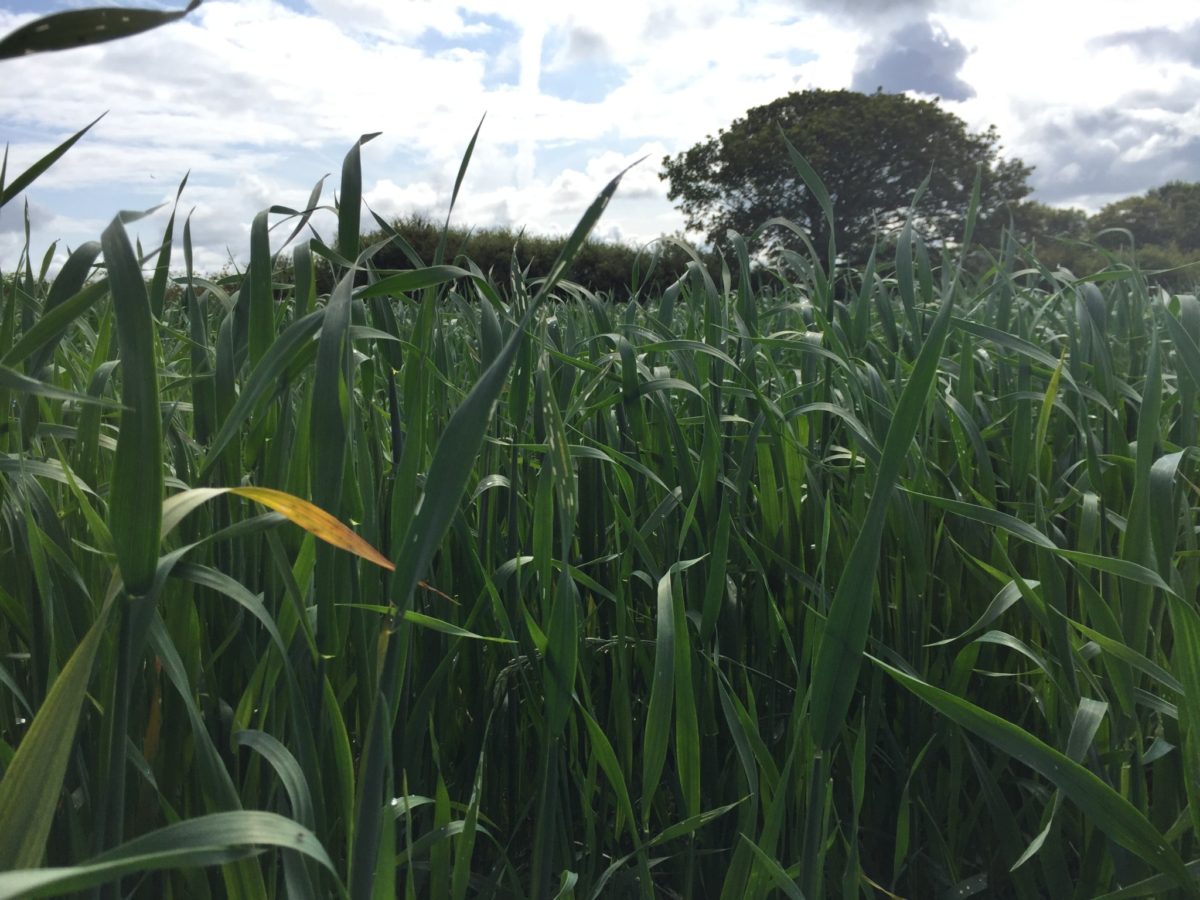
We’re also experimenting with growing cereals for the first time. Not many people grow cereals in Pembrokeshire anymore — now confined to pockets of arable along the coastal lowlands — though it was once a significant part of local agriculture. After all, in the past we couldn’t so easily or cheaply import grain from East Anglia.
So for the first time we ploughed-up a field. It was a field we’d used for the pigs, and in March fed the cows out for a month, so it was poached up and needed some remedial work. I could’ve re-seeded it to a diverse grass and herb mix, but decided to take the opportunity to put down a crop instead. I’ve recently got involved with a local group called Llafyr Ni, Our Cereals, which is aiming to grow heritage grain varieties in Wales, as a way of supporting local food and seed sovereignty. Within that group we’ve formed a smaller group of farmers that are particularly interested in growing oats, as it was such an important crop to this region not that long ago. Oats thrive in the wetter, more acidic soils of the western parts of the UK.
We’re just experimenting at the moment, but the aim of the crop is to grow milling oats and sell it to our local mill to be sold onto locals as porridge oats. I’m finding it one of the most exciting things we’ve done on the farm. The field has been ploughed, rolled, harrowed, seeded and harrowed and rolled once more in order to prepare it. The ploughing was done by a local friend, the rest done with our little tractor, with the seed broadcasted by hand.
It went in a few weeks late, but it’s looking like we’re going to get a good crop. It looks lush and green, with ears now starting to form. We now need some good warm weather in August to help get it dry enough to harvest.
We’re very fortunate to have a friend locally with a combine harvester who’s prepared to come and combine just an acre of oats — normally that wouldn’t be possible, so we’re grateful to him. If we manage to combine it then we’ll also be able to cut a few bales of straw for winter bedding. Only a tiny percentage of all the straw we’ll use but I feel it’s a step in the right direction of becoming a more sustainable and resilient small farm. If we don’t manage to combine it then we’ll probably bale it for whole-crop silage.
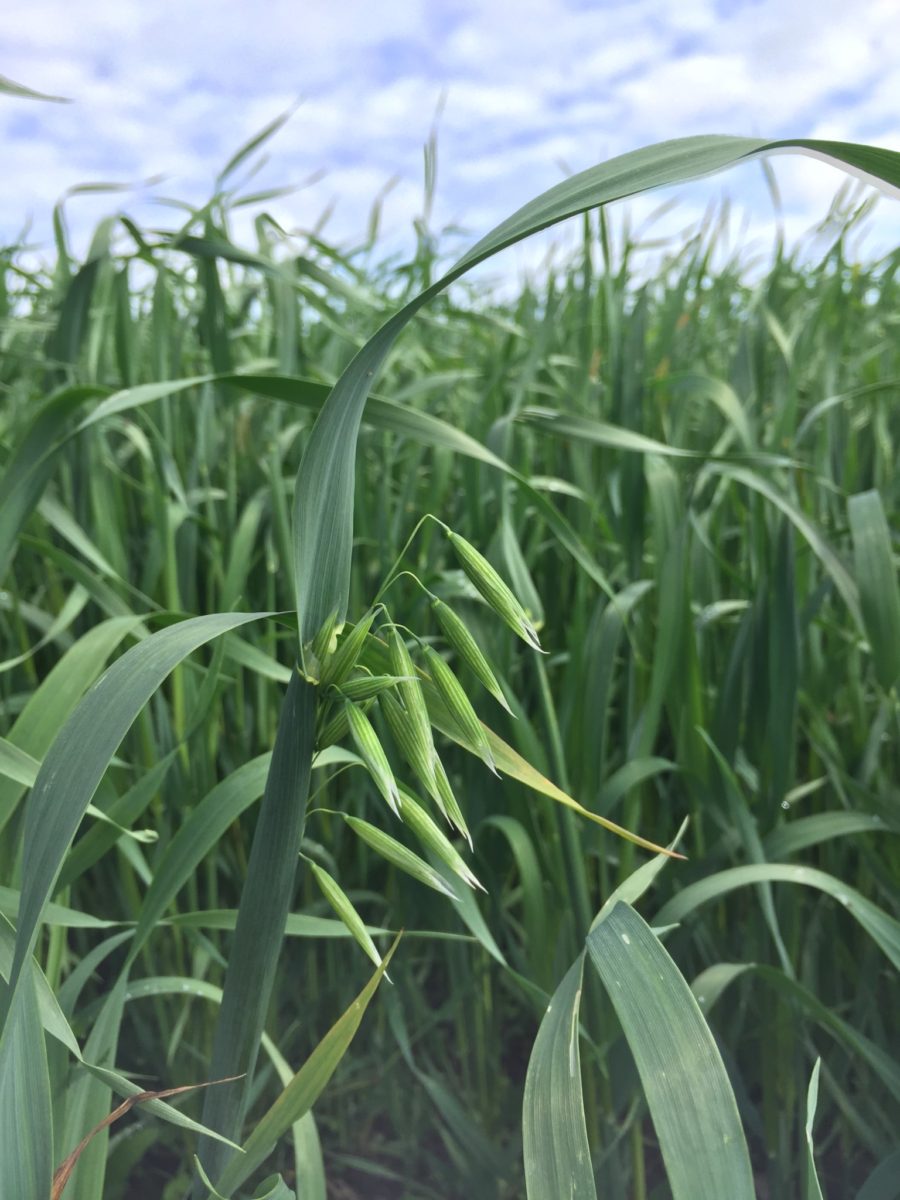
Ultimately our entire farm is one large experiment in a different way of farming that returns to patterns of agriculture that were once common but now rare, updated with modern methods.
We recently finally planted our first mini-orchard with the trees bought for us as wedding presents two years ago. We’ve planted 14 fruit trees and a dozen fruit bushes in a spot near the house that will one day provide more than enough fruit for the inhabitants of Mountain Hall. A friend who runs a local tree nursery has been nursing them for us till now and recently helped us plant them out. I’m really excited to see them grow and develop over time.
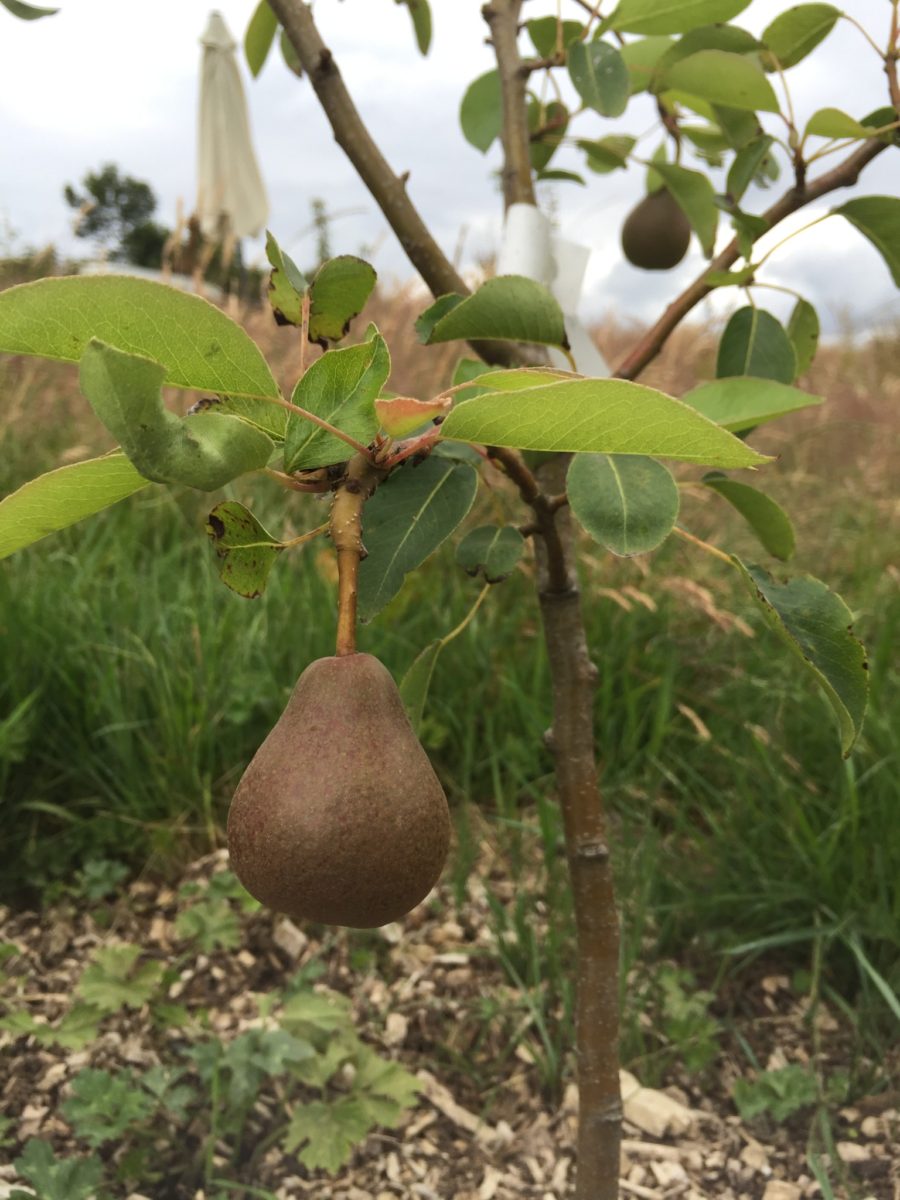
It’s so nice this year to have some space to focus attention on other aspects of the farm. Every farm would’ve once had a small orchard, and I would love to see that practice return. I find it sad to reflect on how so many farms don’t grow any of their own food for the kitchen table. It’s a symbol of modern times.
We hired a bull, Y Ddraig Goch Louis XIV, from a local friend. A Salers bull that was friendly and good at getting the job done. He was absolutely awe-inspiring to be around — sheer power and presence. The cows were extremely excited to meet him, and instantly and instinctively formed a circle around the trailer, with a few brave girls going up to peck him on the lips.
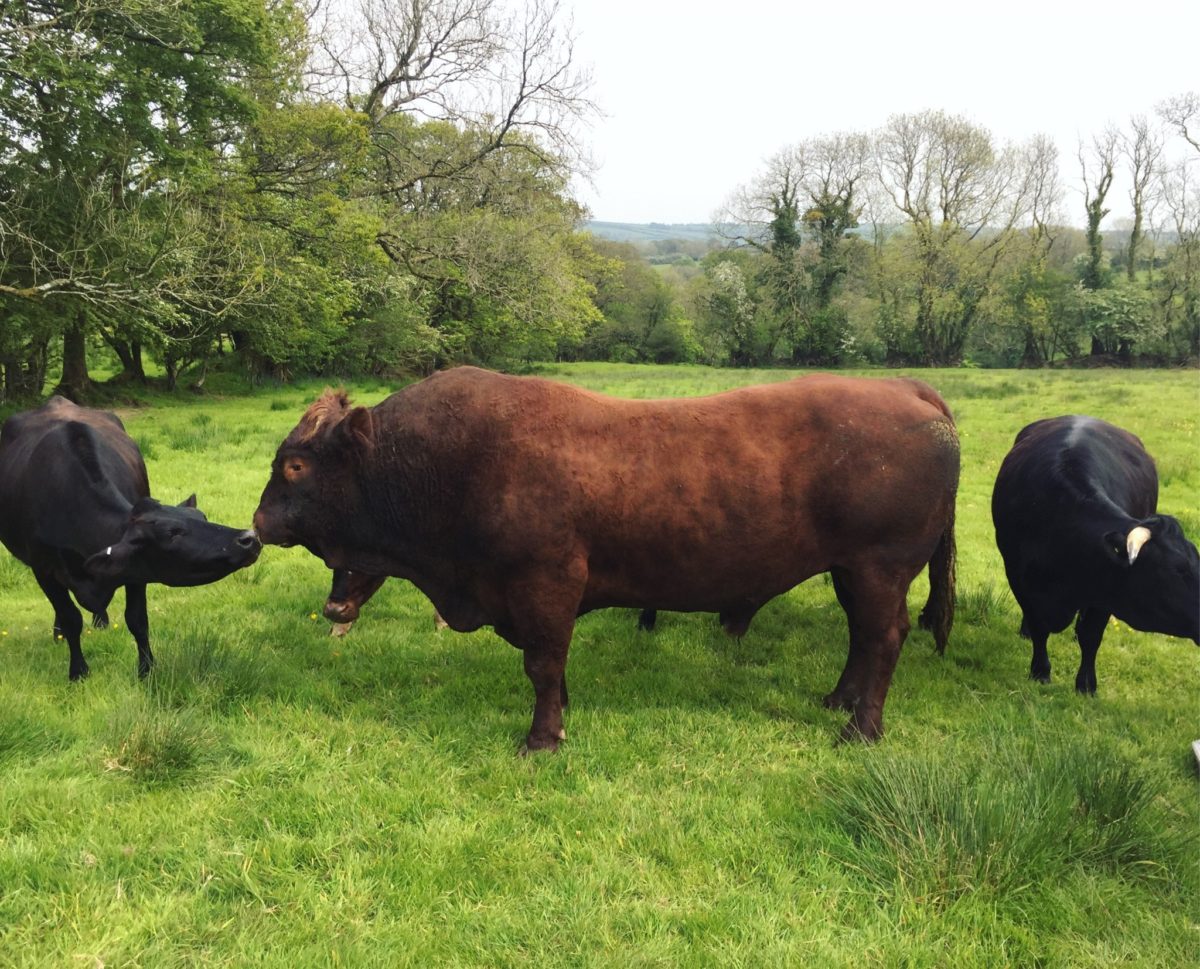
In a world where views are increasingly polarised and tending towards the extreme, we’re hoping to tread the middle ground. In the farming and food debate with vegans pitched against livestock farmers, the traditional mixed farm straddles between the two. It says that plants and livestock are inseparable, and in a healthy farming system support each other. Animal-free farming is what’s got us into the soil crisis where we only have 60 harvests left before we’ve exhausted soil reserves in the over-worked farms of the east of the UK.
Animals and arable must now be reintegrated again in order to safeguard the food supply of the future in a post-oil world of climate change. There’s an increasing movement towards veganism, but true veganism would have to come from farms that uses no animal inputs, which would be disastrous for soil health.
We’re hoping to show a path where indeed people can rely upon direct plant consumption (the nutrition from a cow still comes from plants, just indirectly), but that animals are integral to doing that in a healthy manner. That’s a more complex argument to make, and will take more time to filter through the noise in the media, but over time I think it will, if we show how important animals are to managing agricultural land responsibly and regeneratively. I have no desire in influencing what people decide to eat, as the whole topic is a minefield and each to their own, but I do desire to show what it means to produce healthy food in an ecological manner that supports the soil as well as the local community within our context in the hills of south west Wales.



